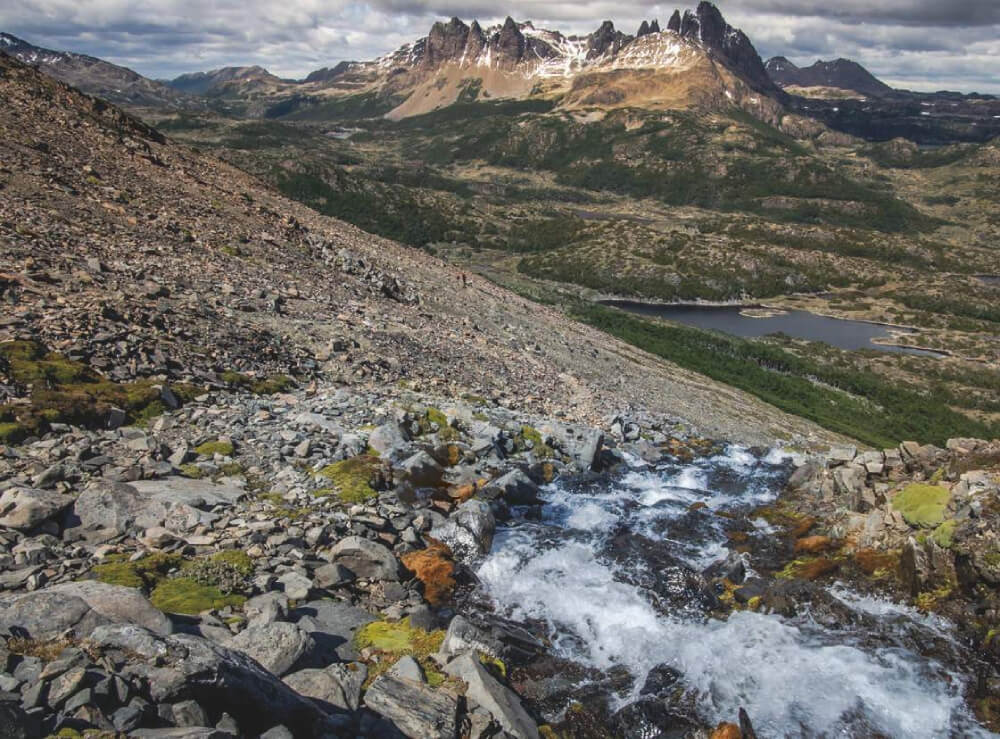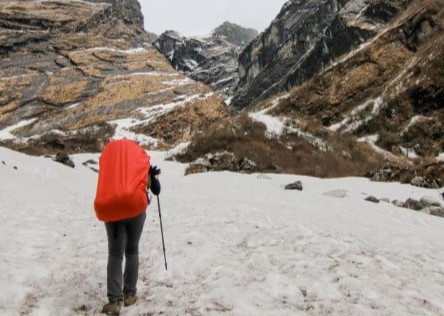Summary
General Information
Cerro Tronador
Acceso libre
Location: Chile, Región de los Lagos
Argentina, Provincia de Río Negro
Area: Peulla
Nearest city: San Carlos de Bariloche
Altitude:
3491 m.
3478 m.
Year First ascent: 1934
First ascent:
Hermann Claussen (DE)
Geographic position:
Lat: -41° 9' 32.1" (WGS 84)
Lon: -71° 53' 28.6"
Alta Montaña
Área protegida
Routes
Summit Book
Last Update
Mountain
Cerro Tronador (3491 m.)
Author: Ulrich Lorber, Ismael Mena Valdés
Updated at 03/04/2025
Introduction
Mount Tronador is certainly an impressive peak. Its tremendous massif, covered by seven glaciers which spread along its slopes until falling violently over giant cliffs; its height which makes it by far the highest summit in the surroundings, only surpassed by Lanín, 100kms. to the north; its three summits of kingly aspect; the giant crevasses which cross its glaciers and which remain always a threat for the climber; the spectacular environment where it is situated, surrounded by glorious lakes and symmetrical volcanoes. All this contributes to making Tronador a mountain very hard to forget, for anyone who ever fixed his eyes on it.
Tronador is located near the eastern shore of Lake Todos los Santos, in the border with Argentina. Of volcanic origins, its has three clearly distinguishable summits: the main summit, 3491m, which is shared by Chile and Argentina; the Chilean Summit, 3320m; and the Argentine Summit, 3200m aprox.
The intensive glaciation of the mountain is notorious. A total of seven great glaciers surround the peak on all of its flanks; this phenomenon is, naturally, more notorious on the south face of the mountain. On the Argentine side are, from north to south, glaciers Frías, Alerce, Castaño Overo and Manso. On the Chilean side, again from north to south, are glaciers Peulla, Casa Pangue and Río Blanco.
The name of the peak (tronador - that thunders) probably has its origins in the frequent serac falls on the glaciers - and the following sound similar to thunder.
First Ascents
Tronador had a large history of attempts before its main summit was finally attained the 29 of January, 1934, by Hermann Claussen, who climbed it solo. Among previous attempts, rank at least five by Frederic Reichert (1909, 1911, 1922, 1928, 1931), and also an attempt by the well known Bariloche climber and CAB (Club Andino de Bariloche) member, Otto Meiling, together with Tutzauer in 1933, just to mention a few.
First ascent of the main summit
Hermann Claussen, 29 of January, 1934 (solo).
Route from the south, via the Promontory: first to the east pass (3000m. aprox), then via southeast ridge to the Promontory (3370m. aprox) and finally along the snow ridge ("Eisgrat"), ice wall ("Eismauer") and traverse ("Quergang") to the northeast ridge and then summit.
Alternate route to main summit
According to writings on the refuge logbook, the main summit would have been climb by an Argentine group (Bariloche), via Río Blanco Glacier and west pass, that is, the pass between the Chilean summit and the main summit. This is a route with a lot of work on ice.
First ascent to Chilean summit
28 of February, 1934, by italian count Aldo Bonacosa, Luighi Binaghi and Giusto Gervasutti, who baptized it "Pico Matteoda"
First ascent to Argentine peak
1936 by Hans Nöbl, Alex Hemmi and Heriberto Schmoll.
 Sign the summit book
Sign the summit book








